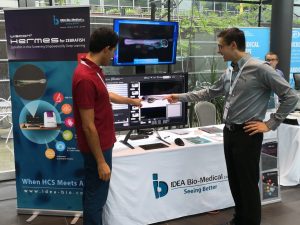Organoid culture has revolutionized scientific research, offering a powerful means to model complex mammalian tissues in vitro. Traditionally, characterizing organoids involved slow and labor-intensive methods like paraffin embedding and sectioning, limiting their utility for compound screening or drug development. The emergence of high-throughput analysis approaches, particularly leveraging automated high-content imaging platforms, has transformed the landscape.


Challenges in Organoid Imaging
While the benefits are immense, 3D imaging of organoid cultures comes with challenges. The thickness and opacity of organoids hinder light penetration, and their dynamic nature requires time-lapse imaging, leading to potential phototoxicity. Structural integrity maintenance during imaging, data volume concerns, and maintaining natural biology are additional complexities.
Solutions with Hermes Imaging System
Overcoming these challenges demands innovative solutions. The Hermes imaging system integrates seamlessly with external liquid handlers or incubated plates stackers, facilitating long-term growth with media exchanges. The patented laser-based autofocus procedure addresses imaging issues arising from U-shaped bottom microplate labware. Its advanced features, such as stationary sample, rare event detection, and multichannel z-stack imaging, coupled with the WiSoft Athena analysis software, enhance the imaging of entire organoid samples while maintaining structural integrity.
Tips and Tricks for Successful Organoid Imaging
For newcomers to organoid imaging, optimizing protocols is key. Testing different concentrations, permeabilization techniques, and incubation times can enhance penetration of antibodies and stains. The use of clearing reagents, growth media optimized for fluorescent imaging, and well-matched fluorescent labels further refines imaging quality.
Advanced Imaging Protocols
For rare-event detection, employing lower magnifications initially and transitioning to higher magnifications as needed is recommended. Researchers new to extended time-lapse microscopy should consider a learning curve, balancing imaging intervals and phototoxicity, with control wells for reference.
Embark on your journey into organoid imaging with these winning tips to explore the depth of information offered by this cutting-edge technology.

What’s next for Zebrafish microscopy in 2023
News: What’s next for Zebrafish microscopy in 2023? Dr. Jason Otterstrom talks about the benefits and challenges of using Zebrafish as an emerging model for

Athena Zfish software- Installer
Time to Elevate Your Research with Athena Zebrafish Software! Dashboard | Technical overview | Pricing Our new, first-of-its-kind analysis software for automated analysis of Zebrafish microscopy images offers simple

Zebrafish: A Preclinical Model for Drug Screening
Zebrafish: A Preclinical Model for Drug Screening Download Software Preclinical models play a fundamental role in the drug discovery pipeline, enabling researchers to identify compounds

White Paper: Advancing Therapeutics for Kaposiform Lymphangiomatosis (KLA) with High-Throughput Zebrafish Models
Explore groundbreaking Kaposiform Lymphangiomatosis (KLA) research using zebrafish models. The Yaniv Lab leverages IDEA Bio-Medical’s Hermes microscope and Athena software for high-throughput drug screening, identifying promising treatments like Cabozantinib and GSK690693 for this rare lymphatic disorder.
